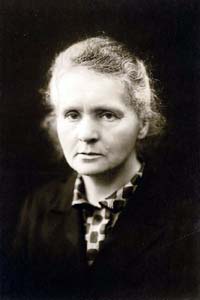
| Born: Nov 7, 1867 in Warsaw, Kingdom of Poland, then part of Russian Empire |
| Died: July 4, 1934 (at age 66) in Passy, Haute-Savoie, France |
| Nationality: Polish, French |
| Field: Physics, chemistry |
| Famous For: Radioactivity, polonium, radium |
| Awards: Nobel Prize in Chemistry (1911), Matteucci Medal (1904), Nobel Prize in Physics (1903), Davy Medal (1903) |
Marie Curie was born Maria Sklodowska in 1967 in Warsaw, Poland. She was the first woman to win the Nobel Prize and the only woman to have won the award on two different occasions. Her efforts with Pierre Curie, her husband, led to the discovery of radium and polonium.
Early Life and Career
Marie Curie’s parents were both school teachers. She was the youngest of five children and she took after Ladislas, her father, who was a math and physics teacher. She was a bright young girl with a curious mind and she did excellently in school. Tragedy struck her at the age of 11 when she lost her mother to tuberculosis.
After graduating from her high school, she suffered from a mental breakdown for about one year. This was due to the fact that she could not be granted admission to a Russian or Polish University because she was a woman. For this reason, she worked for several years as a tutor and governess. She studied physics, math and chemistry during her spare time until in 1891. She then made her way to Paris where she enrolled at Sorbonne.
During this time, she obtained Licenciateships in mathematical sciences and physics. She also became the first woman to teach here. She then met Pierre Curie, a professor in the University’s School of Physics and they got married three years later in 1894.
She graduated from Sorbonne with a master’s degree in physics a year before her marriage. She attained another degree in mathematics in 1894. Around this time, she was commissioned to carry out research on different types of steel in order to determine their magnetic properties. She did this lab work with the assistance of Pierre Curie.
Achievements and Contributions
Together with her husband, Marie studied radioactive materials, in particular, uranium ore and pitchblende. The pitchblende element had properties of being more radioactive than uranium. In 1898, Marie and Pierre deduced an explanation that the pitchblende had traces of some radioactive components that were not known, and that these made it more radioactive than uranium ore. She announced on December 26th of that year the existence of a new substance in pitchblende.
The two, in 1902, isolated chloride salts and two chemical-elements. They named the first element polonium, after Curie’s native homeland and the second one was named radium due to its intense radioactivity. Together with Pierre Curie and Henri Becquerel, Marie Curie was awarded the Nobel Prize in Physics. This was in recognition of the tremendous services they had all rendered by their joint research on radiation phenomena. Curie was the first woman to ever have been awarded the Nobel Prize. In 1911, she was awarded her second Nobel Prize; this was in Chemistry. It was in recognition of the extraordinary services she had rendered in the advancement of chemistry by discovering the radium and polonium elements.
Marie Curie’s Death
Because she spent most of her entire life working with radioactive materials Marie Curie experienced health problems. She died in 1934 in France where she had gone to regain her strength. Marie Curie died of aplastic anemia, caused by prolonged exposure to radiation.